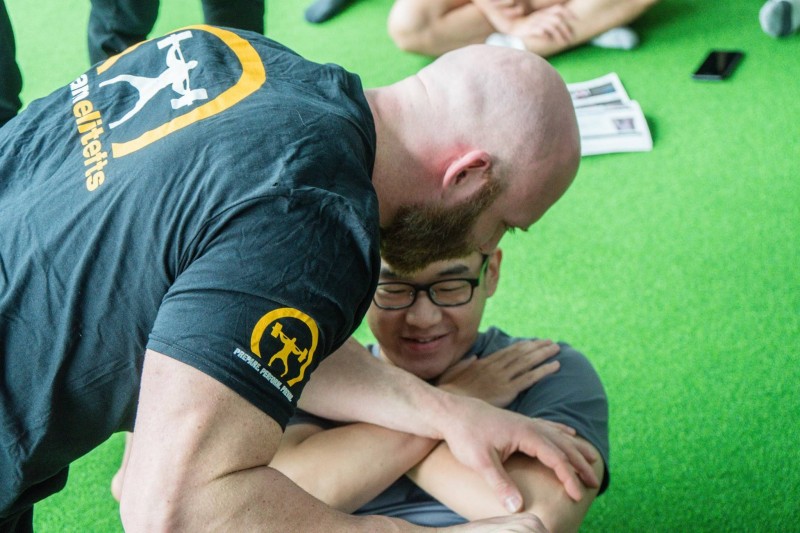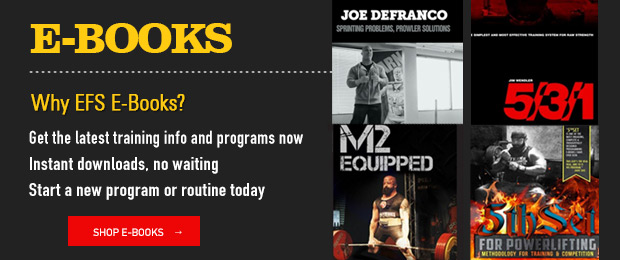
Who is your ideal client? Can you picture that person and what makes them the perfect match for you and your business? Have you ever found yourself face-to-face with that ideal client with the opportunity to tell them all about the great features of your business? The people you’ve helped and how you’ve spent the time and money creating the best product or service possible, only to have that client turn from a warm lead to a cold lead?
What happened?
RECENT: The Characteristics of Mastery
They needed your services – they told you this much. You told them how awesome your business was, and that your services were the best in the industry. You wowed them with how much information you knew, using all the proper terminology and intellectual phrases that define the answer to their problem. You showed them your website where they could find even more information on all the products and services available — yet somehow you felt like you were talking to a nodding and smiling brick wall. Do they not want help? You have exactly what they need, and it’s as if they didn’t even hear you! Surely you communicated that you have the answer to their problems… right?
If this is a scenario that is all too familiar to you, don’t worry: You’re not alone, and the answer to your problem may be a lot easier than you think. But first, you need to ask yourself a question: “Is my message clear?”
Communication is by far the most important ingredient of any relationship. Whether it’s a training partner, coach, or spouse, communication is the foundational centerpiece from which all other relationship attributes are built. When we are talking about a prospective client, the stakes riding on proper communication are even higher.

This is likely their first interaction with you, your website, or your employees. If communication isn’t clear, it is likely that you’re creating a roadblock to helping your ideal client. Asking a client to commit to a purchase without properly communicating what you do and what you’re offering is likely to get a cold response. Would you commit to something you didn’t understand?
Just as in any problem in life, the first step should be self-reflection. If communication is an issue, the reason you are having problems communicating what you do and how you can help solve people’s problems is likely because you don’t fully understand that yourself. Ever heard the saying, “If you can’t explain something simply, you probably don’t understand it?”
What do you do?
One sentence, minimal wording: What exactly is it that you do? What makes you different from the stigmas and experiences that future customers have for other professionals or businesses in your industry? If you’re a strength coach that works with youth athletes, your message may currently be something on the lines of “I train youth athletes.” This may be correct, but guess who else trains youth athletes? EVERYONE.
To be clear, I’m not your mommy telling you that each and every one of you are unique and special to everyone else, but at some point, the question must be raised: “If your clients don’t see you as any different than the person across the street, then what (besides blind luck) would bring them through your doors instead of someone else’s?”
Furthermore, how can you expect someone to understand that you can help them if you can’t even define what it is that you do?
RELATED: Learning the Language of a Prospect
A big mistake here is thinking that you need to explain every aspect of your business in detail in order to communicate what you do and why it can help someone. This can be an ego issue or an understanding issue. In younger professionals, ego is often a dominant roadblock behind stating a business purpose simply. To this person, their business is so unique and complex that they couldn’t possibly explain it in one quick sentence. In fact, to do so would be to lose the essence of what they do, not magnify it!
"You can’t confine the message of what I do down to a sentence! What I do is intricate, complex, and interesting! A sentence couldn’t possibly portray all the things I do!"
For these people, the ego is getting in the way of them communicating clearly because they are focused on themselves rather than the needs of the clients they are serving. If you are a strength coach, personal trainer, or anyone worth your salt in any industry, you put a lot of time and dedication into building your craft. Your time in the industry has taught you that nothing is easy and you have to earn everything you do. There is a lot of pride behind the accomplishments you have obtained. If someone asks you to simplify everything you’ve done and present the bare bones of what you do, this may even come off as an insult!

Here’s the problem. Your audience is not you or anyone else in your profession. In fact, for the strength coach who trains youth athletes, your audience sees strength training as a means to an end in the most simple of ways: Work hard in the weight room so you get bigger, faster, and stronger for your sport. That’s the extent of their understanding and the depth of how far they want to dive into how you’re going to accomplish those tasks.
They still want the best strength coach and the best results for their kid, but they have no idea what that looks like nor the available resources or interests to find those answers out on their own. They are in the market for a strength coach and they want to know one thing: “Will you make my kid better and safer in their sport?”
This is the message they need to hear reverberated back to them for them to understand and trust you with the well-being of their child.
The more we have to elaborate and explain ourselves, the more the message is diluted and the less impact it has on the client. You may be communicating the exact message they want to hear, but if it’s surrounded by five minutes of talking about your training methods, you’re concealing it behind things they don’t care about. Remember, communicating what you do should be as simple and direct as possible: What do you do? Full stop.
Now that we understand the goal of communicating our message, you may realize that you’re still not quite sure you understand what exactly it is that you do. So, how do better understand your business so you can clearly define what you do? Start with first thinking about what it is you sell. Ask yourself what problems your clients face that you have a solution to. If you are a coach who works with youth athletes, what is it that all of your athletes face that you address? Be very specific.
WATCH: Hybrid Performance Group — A One-Stop Shop for Recovery
At Hybrid Performance Group, the problem that we see in the health and strength industry that we are uniquely positioned to help is that people feel as if they have a lack of control over their own health and body.
No one stops doing the things they love because they want to — they stop doing them because their body won’t let them participate anymore. The athlete retires because his body can’t handle the toll of a 16th season and Dad isn’t going outside to throw the pigskin around because he is overweight and his back can’t handle it.

This is the story of many Americans. They stop doing the things they love because their body is not allowing them to do so, and they don’t feel as if they have any control over the process to do something about it.
So at Hybrid, we sell health autonomy. We educate our clients to understand how their body works, how to listen to it, and how to take care of it, so they can enjoy the things they love to do. Perhaps if I were to shorten that message even more it would sound like this:
“I help people learn to take control over their own health so they can live longer, more enjoyable lives.”
Nothing in that sentence explained how I’m going to do this, it simply addressed a problem that my ideal client identifies with (feeling as if their current state of health is holding them back) and placed myself as someone who can help them obtained their desired outcome (living a longer and more enjoyable life). This communication is clear, I have drawn the client’s interest, and they can move forward in making an informed decision to solve their problem.
Have you thought about what it is you do yet, strength coach? What problems are you solving? What is it that you have an answer to?
Parents and young athletes want to do two things: Perform better and stay healthy. So how can a strength coach address those? We all know that proper strength and conditioning can monumentally affect both of those problems. At some level, even parent of your youth athlete knows that as well, which is why they are seeking out professional health.
So, how do you communicate that what you do meets their needs? How does strength and conditioning translate over to performance on the field? There are a few acceptable answers.
One answer is a strength coach identifies the weak points of an athlete that are hindering their on-the-field performance or may have caused an injury. If the strength coach correctly identifies and addresses these weak points, the athlete is able to move and perform the tasks required in their sport at a higher level, safer. So your message may be something like this:
“I address deficiencies in the athlete so they can perform better and safer on the field.”
This message is much clearer. First, it identifies a problem: Your kid has weaknesses that are hindering their performance and could lead to injury. The parent probably already knows this, and the fact that you honed in on it connects with them.
READ MORE: Start Here: Your 3 Core Offerings
Second, it states what result your training will provide to solve their problem: better performance with less risk of injury.
Businesses exist because of one scenario and one scenario only: People have problems that need to be solved.
By spending time understanding what you do and how it connects with the needs of your clients, you can begin to build a framework of better communication that will allow you to help more people and grow your business.











2 Comments